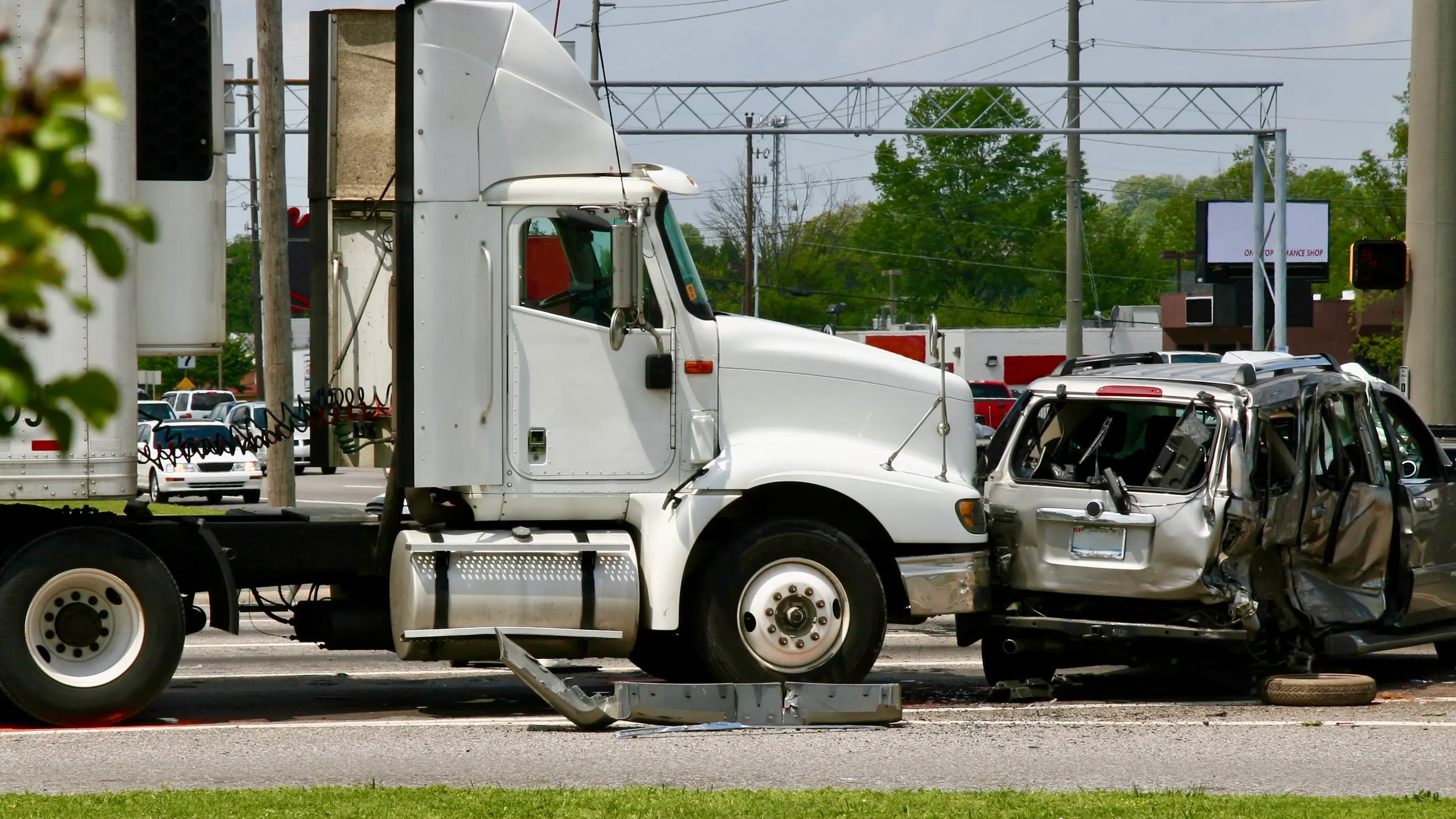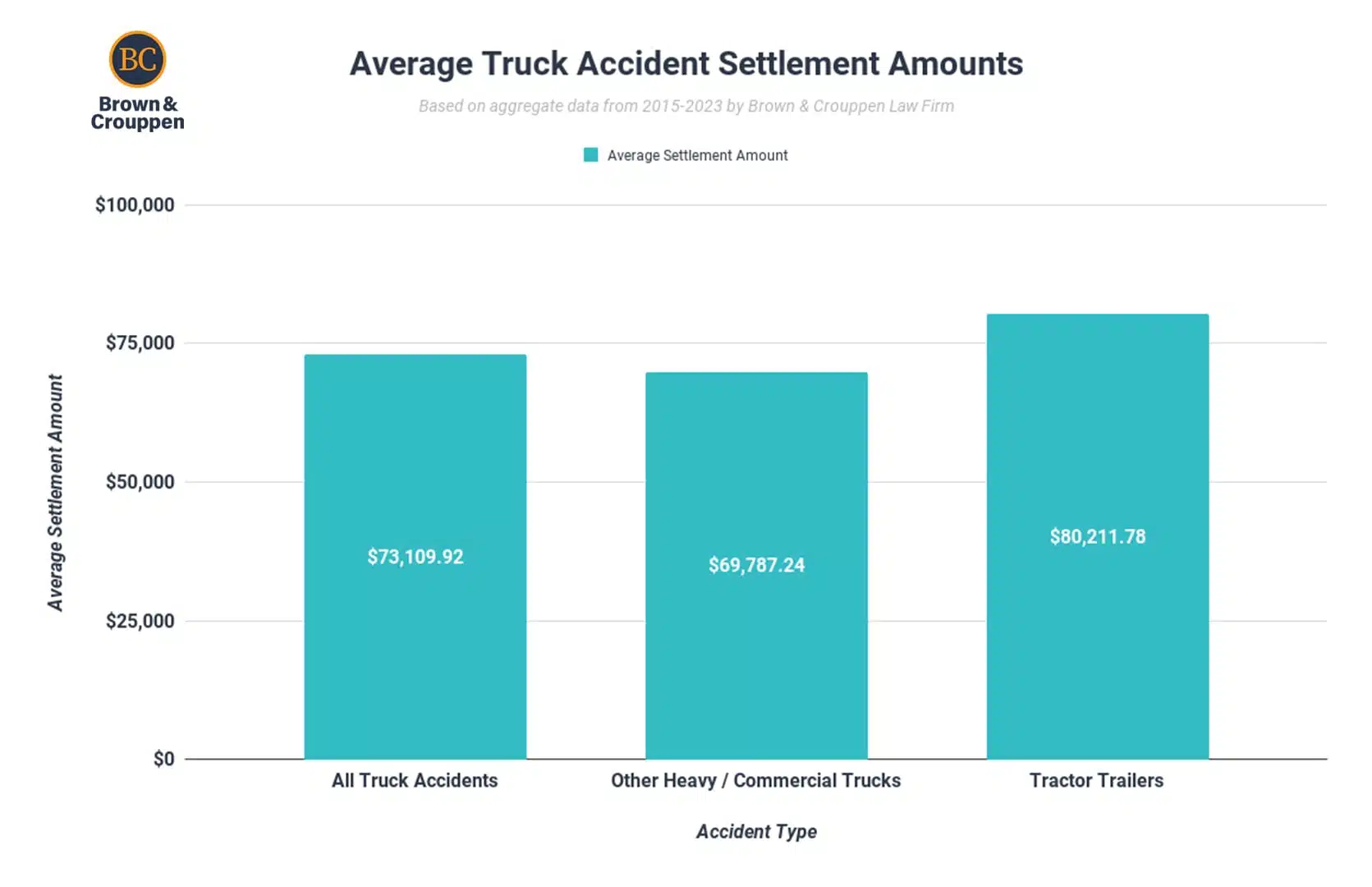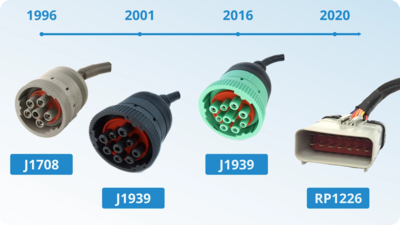
Fleet safety is a crucial part of any trucking operation, and it's becoming even more important as the industry grows and evolves. With the help of trucking technology, fleet safety can be managed more effectively and become a competitive advantage for fleets. By focusing on safety, fleets can better protect their drivers, vehicles, and cargo while reducing liability and other costs associated with accidents. In this blog post, we'll look at how fleet safety can be a major factor in a fleet's success and why investing in safety should be a priority.
The Importance of Fleet Safety
In the fast-paced world of trucking, fleet safety is not just a matter of regulatory compliance - it's a critical component of a successful operation. Ensuring the safety of drivers, vehicles, and cargo is not only the right thing to do, but it also makes good business sense.
One of the main reasons fleet safety is so important is the cost of accidents and incidents. From property damage and medical expenses to legal fees and increased insurance premiums, the financial impact of accidents can be significant. By prioritizing fleet safety, companies can minimize these costs and protect their bottom line.
Additionally, a safe fleet has numerous benefits beyond financial savings. It creates a positive working environment where drivers feel valued and supported. This, in turn, leads to increased driver retention, which is crucial in an industry facing a driver shortage. A safe fleet also enhances a company's reputation, attracting more customers who prioritize safety and reliability.
The Cost of Accidents and Incidents
Accidents and incidents can have a significant financial impact on a fleet, making it essential to understand the cost associated with them. When a fleet is involved in an accident, it's not just the immediate expenses that need to be considered, such as property damage or medical bills. There are also long-term costs that can accumulate over time.
One of the most obvious financial impacts of accidents is increased insurance premiums. When a fleet has a history of accidents, insurance companies view them as a higher risk, resulting in higher premiums. This can significantly affect a fleet's budget, taking away valuable resources that could be invested in other areas.
Legal fees are another significant cost associated with accidents. If an accident results in a lawsuit, fleets will have to hire legal representation, and the legal process can be lengthy and expensive. It's not just the cost of hiring a lawyer, but also the time and energy that goes into dealing with legal proceedings.
In addition to insurance and legal fees, there are other costs to consider, such as vehicle repairs, replacement or rental vehicles, and even potential loss of business due to a damaged reputation. All of these costs can add up quickly, impacting a fleet's profitability and sustainability.
To mitigate these costs, fleets can leverage technology such as telematics and dash cameras. These tools can provide valuable insights into driver behavior, allowing fleets to identify risky driving patterns and take proactive measures to improve driver safety. By investing in driver safety, fleets can reduce accidents and incidents, ultimately minimizing the financial burden they entail. Brown and Crouppen recently did a fantastic write up about the average accident cost that can be found here.

Benefits of a Safe Fleet
A safe fleet not only reduces the financial burden of accidents and incidents but also brings a multitude of benefits to the table. One of the most significant advantages is improved driver retention. When drivers feel safe and supported, they are more likely to stay with a company long-term. In an industry facing a driver shortage, this is invaluable. By investing in driver safety through ongoing training and utilizing technology such as telematics and dash cameras, fleets can create a positive working environment that attracts and retains talented drivers.
Furthermore, a safe fleet enhances a company's reputation. Customers value safety and reliability, and they are more likely to choose a fleet that prioritizes those aspects. By actively promoting a culture of safety and implementing advanced safety technologies like telematics and dash cameras, fleets can differentiate themselves from the competition and win more business.
In addition to driver retention and improved reputation, a safe fleet also reduces downtime and maintenance costs. Accidents and incidents often result in vehicle damage and the need for repairs or replacements. By avoiding these incidents through effective safety measures, fleets can minimize vehicle downtime and reduce associated costs.
Ultimately, a safe fleet not only protects the well-being of drivers, vehicles, and cargo but also offers a competitive advantage in the industry. By prioritizing safety and investing in the right technologies, fleets can reap the benefits of reduced costs, improved driver retention, enhanced reputation, and increased customer satisfaction. Safety should be a top priority for any fleet looking to succeed in a rapidly evolving industry.
Creating a Culture of Safety within the Fleet
Creating a culture of safety within the fleet is essential for ensuring the well-being of drivers, vehicles, and cargo. It involves establishing clear expectations and providing ongoing training to promote safe driving behaviors. By prioritizing safety and investing in driver education, fleets can create an environment where safety is valued and practiced by all.
To start, fleet managers should develop comprehensive safety policies and procedures that outline the expectations for safe driving practices. These guidelines should cover topics such as speed limits, following distance, use of seat belts, and avoidance of distractions. By setting these standards, fleets can communicate the importance of safety to their drivers and provide a framework for safe operations.
In addition to policies, ongoing driver training is crucial for maintaining a culture of safety. Training programs should include topics such as defensive driving techniques, hazard identification, and proper vehicle maintenance. By regularly reinforcing safe driving practices, fleets can ensure that drivers are equipped with the knowledge and skills necessary to make safe decisions on the road.
Technology can also play a significant role in promoting a culture of safety. Implementing telematics systems and dash cameras allows fleets to monitor driver behavior and identify areas for improvement. These tools provide real-time feedback to drivers, helping them to recognize and correct risky driving habits. Additionally, they can be used as coaching tools to provide targeted feedback and reinforcement of safe driving practices.
Creating a culture of safety within the fleet is a collaborative effort that requires buy-in from all levels of the organization. Fleet managers should lead by example and prioritize safety in all decision-making processes. By fostering a safe working environment, fleets can empower their drivers to prioritize safety and ultimately reduce the risk of accidents and incidents.
Leveraging Safety as a Competitive Advantage
In the competitive world of trucking, fleet safety can be more than just a means to avoid accidents and incidents. It can actually be a powerful tool for gaining a competitive advantage in the industry. By prioritizing safety and implementing effective safety measures, fleets can differentiate themselves from their competitors and attract more customers who value reliability and professionalism.
A safe fleet sends a strong message to potential customers that the company takes safety seriously and is committed to protecting their assets and delivering their cargo safely. This can give fleets a significant edge in winning contracts and securing long-term partnerships. Customers are more likely to choose a fleet that has a proven track record of safety and a solid safety culture.
Furthermore, a safe fleet can also be a major factor in driver retention. In an industry facing a shortage of qualified drivers, creating a safe working environment where drivers feel valued and supported can make all the difference in keeping talented drivers on board. By investing in driver safety through ongoing training and utilizing advanced safety technologies, fleets can attract and retain top-notch drivers, giving them an advantage over their competitors who may struggle with high turnover rates.
The Do-It-All Fleet Management Platform.
Start Today, No Contract. No CC.
Innovative Technology and Strategies for Improving Safety
In today's rapidly evolving world, technology plays a crucial role in every industry, and fleet safety is no exception. By leveraging innovative technology and implementing effective strategies, fleets can improve their safety practices and protect their drivers, vehicles, and cargo more effectively.
One of the key technologies that can enhance fleet safety is telematics. Telematics systems collect data on driver behavior, vehicle performance, and road conditions in real-time. By analyzing this data, fleet managers can identify risky driving patterns and take proactive measures to improve driver safety. For example, if a driver is frequently speeding or harshly braking, the fleet manager can provide targeted coaching and training to address these behaviors. Telematics systems can also provide alerts for potential maintenance issues, ensuring that vehicles are in optimal condition and reducing the risk of accidents caused by mechanical failures.
Another technology that can significantly enhance fleet safety is the use of dash cameras. Dash cameras provide video footage of both the road ahead and the driver's behavior. This footage can be used as evidence in the event of an accident, helping fleets protect themselves against false claims and ensure accurate accident investigations. Additionally, dash cameras can provide real-time feedback to drivers, alerting them to potentially dangerous situations such as lane departures or forward collisions. By actively monitoring driver behavior and providing immediate feedback, dash cameras can help drivers develop safer habits and reduce the risk of accidents.
In addition to technology, there are also various strategies that fleets can implement to improve safety. Driver training programs are essential for equipping drivers with the knowledge and skills to make safe decisions on the road. These programs should cover topics such as defensive driving techniques, hazard identification, and proper vehicle maintenance. By regularly reinforcing safe driving practices through ongoing training, fleets can ensure that drivers are continuously improving their safety skills.
Furthermore, creating a safety culture within the fleet is vital. Fleet managers should lead by example and prioritize safety in all decision-making processes. They should communicate the importance of safety to their drivers and provide the necessary resources and support to maintain a safe working environment. By fostering a culture of safety, fleets can empower their drivers to prioritize safety and ultimately reduce the risk of accidents and incidents.
Best Practices for Promoting and Maintaining a Safe Fleet
Promoting and maintaining a safe fleet requires a proactive and holistic approach. Here are some best practices that fleets can implement to prioritize safety and create a culture of safety within their organization.
First and foremost, fleet managers should lead by example. They should demonstrate their commitment to safety by making it a priority in all decision-making processes. By showing that safety is valued and important, fleet managers can set the tone for the entire organization.
Ongoing driver training is crucial for maintaining a safe fleet. Training programs should cover topics such as defensive driving techniques, hazard identification, and proper vehicle maintenance. By regularly reinforcing safe driving practices, fleets can ensure that drivers are equipped with the knowledge and skills necessary to make safe decisions on the road.
In addition to training, fleets should also implement a comprehensive safety policy and procedure. This policy should outline expectations for safe driving practices and cover topics such as speed limits, following distance, use of seat belts, and avoidance of distractions. By setting clear standards, fleets can communicate the importance of safety to their drivers and provide a framework for safe operations. TruckSpy President and Founder, Flint Holbrook did a video about it here.
Technology can also play a significant role in promoting and maintaining a safe fleet. Telematics systems like ours can provide valuable insights into driver behavior, allowing fleets to identify risky driving patterns and take proactive measures to improve driver safety. TruckSpy's very own Ai powered Dash cameras can provide real-time feedback to drivers, alerting them to potential dangers and helping them develop safer habits. Regular communication and feedback are essential for maintaining a culture of safety within the fleet. Fleet managers should regularly engage with drivers to discuss safety issues, provide feedback on performance, and address any concerns or challenges. By fostering an open and transparent dialogue, fleets can create an environment where safety is valued and practiced by all.
Recent Blogs
by Elyse Byers
July 5, 2024




